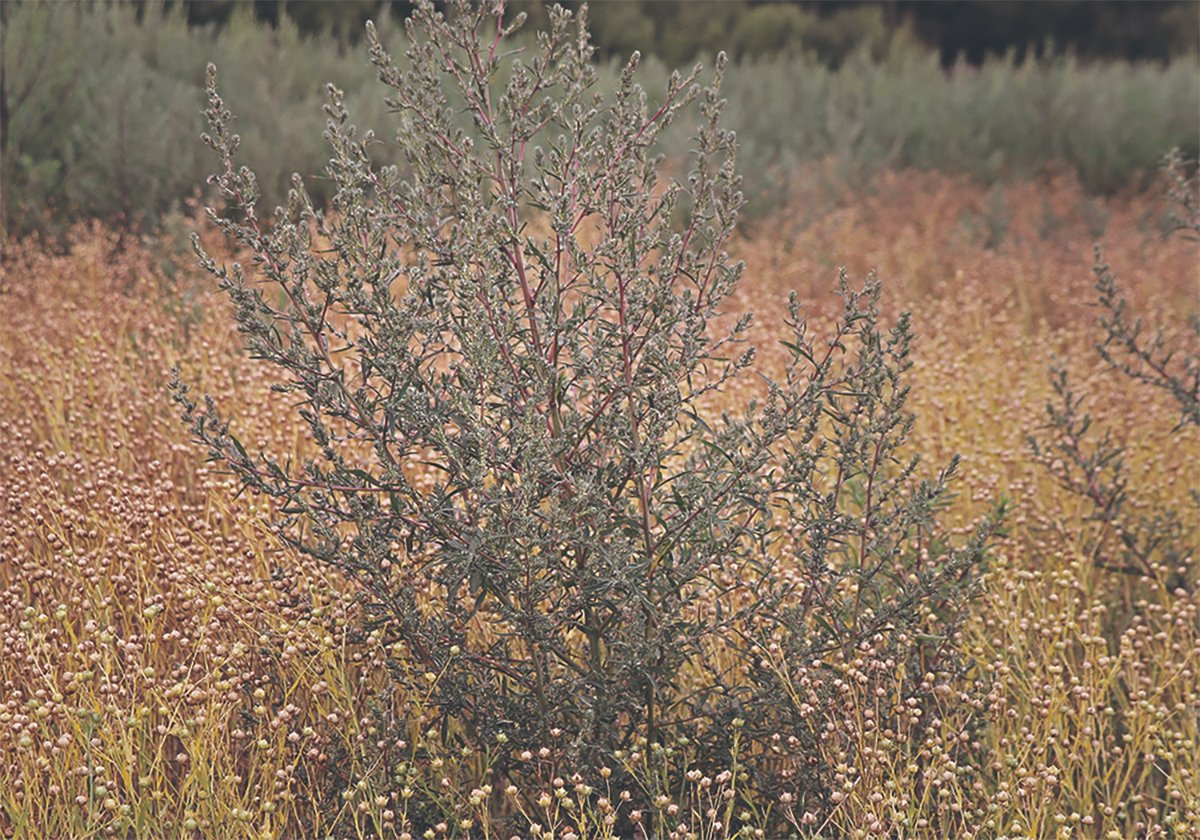September has not been kind to western Canadian agriculture.
The wind has been absolutely crazy: 70 to 90 km/h over an extended time frame and a large geographic area. Swathed canola didn’t stand a chance, particularly if it had dried down and was close to combining.
Scattered canola swaths are not uncommon in the fall, but this year’s damage could be the most widespread and expensive in the history of Canadian canola production.
Analysts trying to estimate the loss are coming up with staggering numbers.
Read Also

Kochia has become a significant problem for Prairie farmers
As you travel through southern Saskatchewan and Alberta, particularly in areas challenged by dry growing conditions, the magnitude of the kochia problem is easy to see.
So close to the bin. So disappointing.
This on top of myriad other canola woes: sclerotinia, aster yellows, spring flooding, summer heat.
Yes, the price is up dramatically, but production is dramatically disappointing.
Producers lucky enough to harvest their canola before the big winds may be facing another disappointment. They may not have as much canola as they thought. In many instances, bushel weights are low. A 5,000 bushel bin may be holding only 4,500 bu. Producers need to be careful not to contract more than they have.
September has been a devastating month for the Canadian hog industry. Big Sky Farms is in receivership and Puratone has filed for bankruptcy protection. Big Sky is Saskatchewan’s largest hog producer. Puratone is the third largest in Manitoba.
Big Sky went through creditor protection and was restructured a couple years ago. Many creditors had to take a haircut. Now the operation is likely to be sold for a fraction of replacement value, or it may be sold off in pieces.
The nail in the coffin has been the dramatic rise in feed grain prices, spurred by the shortfall in American corn production.
Large hog operations don’t evoke a lot of public sympathy, but hog farms of all sizes have been dropping like flies. They just don’t garner media attention.
The industry has faced difficult economics for years. Over that ex-tended time frame, profitability has been fleeting and marginal, unable to stack up against the extended periods of huge losses. Now, even the heavyweights in the industry are going down.
Prices will still be profitable for cow-calf producers looking forward to the upcoming fall calf run, maybe even a bit better than last fall. But they will be nowhere near the levels expected a few short months ago. High feed costs are again the culprit.
Lopping $100 or more from the price of each calf is bitter medicine. This is a case when price insurance based off the futures market could have paid large dividends.
For the southern Prairies, concern is now focussing on the lack of moisture. While great for harvest progress, it’s never healthy to see virtually no precipitation for months.
Pastures have dried up and water supplies are a problem in some areas. Fall weed control is affected, as is seeding of winter crops.
Big grass and stubble fires have been whipped up by the high winds. The fire threat remains extreme.
September 2012 will also be re-membered as the time when federal and provincial agriculture ministers trimmed farm safety net support levels.
On the bright side, grain prices are high, fertilizer prices haven’t spiked, there’s crop in the bin, harvest has been early, the grain transportation system seems to be working well, cow-calf production is profitable and there’s lots of time for the south to get much needed moisture.
But September has still been ugly.
















